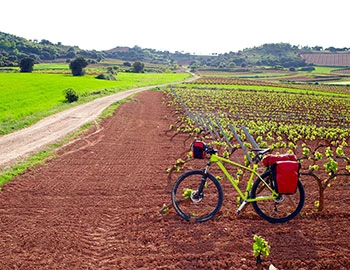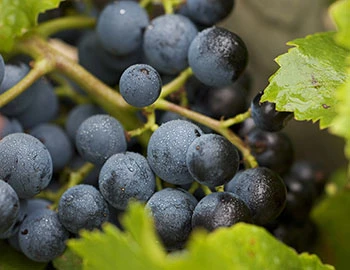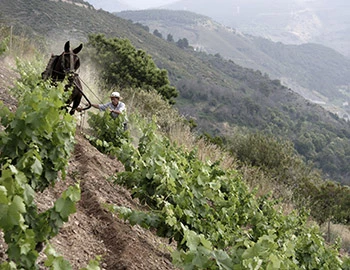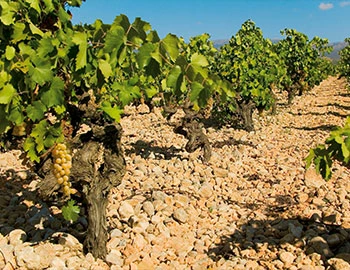Rioja Reserva Señorío Amézola 2015
Rioja Reserva Señorío Amézola 2015
DOC Rioja, Bodegas Amézola de la Mora, 750 ml

For aficionados of the classic Rioja style
- Impresses with complex aromas from long barrique ageing and bottle maturation.
- Subtle roasted aromas, a hint of cinnamon and coconut – elegant on the palate, slightly earthy, juicy and finely structured.
- Particularly harmonious with dark meat and spicy vegetable stews.
Description
This Reserva offers the perfect palate experience with its optimally matured wine in the glass. The long ageing in barrique barrels and many years of bottle ageing manifest themselves in an impressive variety of aromas: vanilla, cinnamon and coconut. On the palate, it presents itself with refreshing elegance, delicate and juicy. Sit back and enjoy: it is at its best with dark meat dishes and hearty vegetable stews.
Attributes
| Grape variety: | Tempranillo, Mazuelo, Graciano |
| Producer: | Bodegas Amézola de la Mora |
| Origin: | Spain / Rioja |
| Ripening potential: | 4 to 12 years |
| Drinking temperature: | 16 to 18 °C |
| Food Pairing: | Calf's kidneys with mustard sauce, Roasted lamb gigot, Spicy hard cheese, Hearty stew with pulses |
| Vinification: | fermentation in steel tank, long must fermentation, soft pressing |
| Harvest: | hand-picking, in small boxes |
| Maturation: | in used barriques, some months bottle storage before sale |
| Bottling: | filtration |
| Maturation duration: | 22 months |
| Volume: | 14.0 % |
| Note: | Contains sulphites |
Bodegas Amézola de la Mora
The Amézola de la Mora family vineyard originated in the 19th century. Already then it enjoyed a good reputation in large parts of the country. With the appearance of the dreaded phylloxera plague, however, production unfortunately came to an end. In 1986, Iñigo Amézola de la Mora brought the family estate back to life.
María and Cristina, the daughters of Iñigo Amézola, who unfortunately died too early, now lead the family estate into the future as a young generation with gentle innovation, without neglecting the deeply rooted traditions. Torremontalbo is the name of the hamlet at a crossroads with as many as four houses. The bodega, not far away, is connected to an underground tunnel. 60 hectares of vineyards spread over at 600 to 700 metres above sea level around the bodega, which is built on a gentle hill. The view sweeps over the wide valley of the Ebro, from the Rioja Alta to the Rioja Alavesa on the other side of the river.

Mazuelo
Fervid oddball
The red Carignan is a heat-loving Mediterranean grape. It has a bit of everything over other varieties: more colour, more tannins, more acid. It is not easy to press a harmonious wine from it alone. Hence it is most often encountered as a blend partner, as in the Côtes du Rhône wines. In Spain it is called Mazuelo and is part of the traditional Rioja recipe. It provides the wines’ acidic backbone. The most exciting varietal specimens come from the slate slopes of the Catalan Priorat, from old bush vines in Chile or from Sardinia, where it is known as Carignano. When pressed properly, this oddball generates a lush bouquet of plums and dark fruits. Its origins lie in the northwest Spanish Aragon, near the town of Cariñena. The surrounding wine area is also named after it. In order to prevent confusion with the vine, it is called Samsó there.

Rioja
Rioja: A legend in upheaval
It is the flagship of the Spanish wine industry: the Rioja region, with its elegant, yet storable wines, most of which are dominated by the Tempranillo, has decisively influenced the image of Spanish wine. Above all, the Reservas and Gran Reservas, aged for years in barrels, enjoy a magical reputation. For about 20 years, the Rioja houses have created a sensation with modern-designed, fruity wines, which are marked more by their terroir than their aging processes.

Spain
Spain – Variety and perfection
“Somewhere in la Mancha, in a place whose name I do not care to remember...,” begins Don Quixote's odyssey.
The most famous part is definitely when Don Quixote thinks windmills are his enemy and wants to fight them – until they nearly kill him. It’s possible there was a bit too much of the La Mancha wine at play. Spanish vines fight for their survival in rugged landscapes, battling fierce drought and rough soils. But they fight well.



